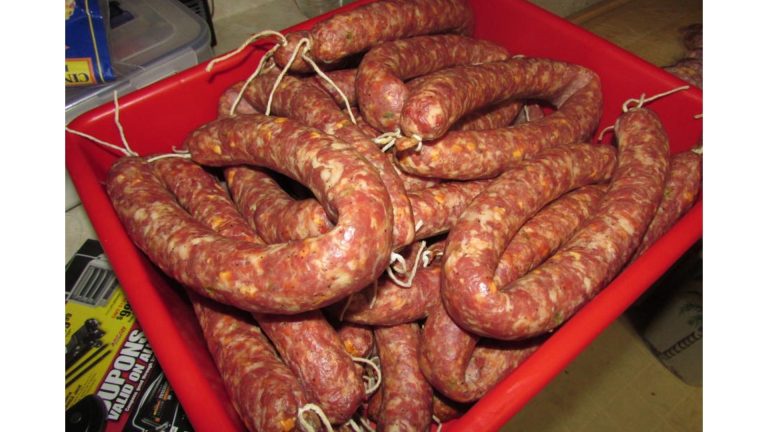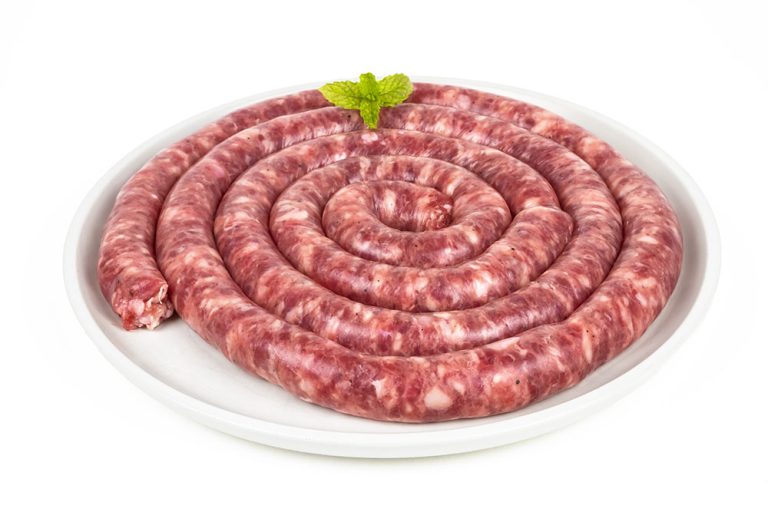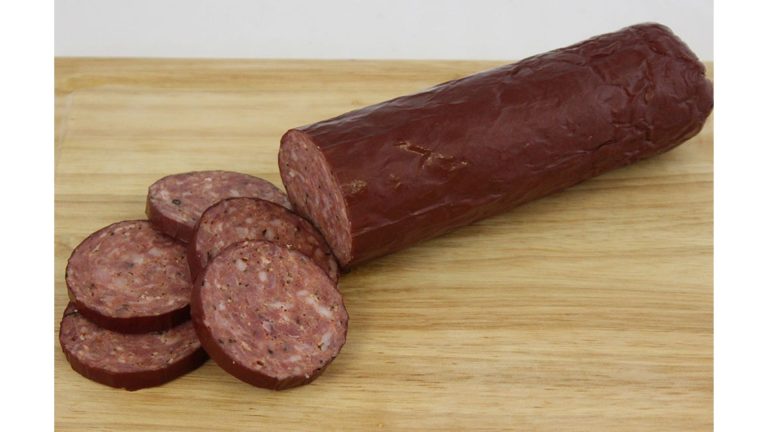How to Tie and Cut Sausage Links?
Learning how to tie and cut the links is one of the most important aspects of making your own sausages.
Once you figure out how easy it is, you will be able to make and separate sausage links like a real butcher.
All you have to do is pinch and twist the meat to tie the sausage link. You need to repeat this process until you reach the end of the sausage link.
For a traditional sausage link, first cut off the end of the casing. Next, cut the casing into 1-inch sections.
Fold the casing over so the inside of the casing becomes the outside of the sausage link. Insert the sausage into the casing. Tie off the end of the casing.
If you want to cut them, use the tip of a sharp knife to separate them. In this article, I will show you how to cut and tie sausage links.
I will give you some tips on how you can make the process even easier.
Table of Contents
How to Tie Sausage Links?
You might think making sausages is simple, but it is more complex than you think. The meat filling needs to be put in the casings before you can start tying links.
You can fill the casing with a grinder or sausage stuffer after you ground the meat and add the seasoning.
Don’t overfill the casing because it can burst during the process of tying links. It’s better to leave some air in the case as well.
Sausages can be natural or synthetic, and they all come in different sizes. The longest sausage shell is 45 feet long, while the shortest is 2 meters long.
Sausage links should be made every five centimeters. You can adjust the length of each sausage according to your personal preference.
Sausage cases are usually eaten, so people don’t mind leaving them on sausages even after they cook them.
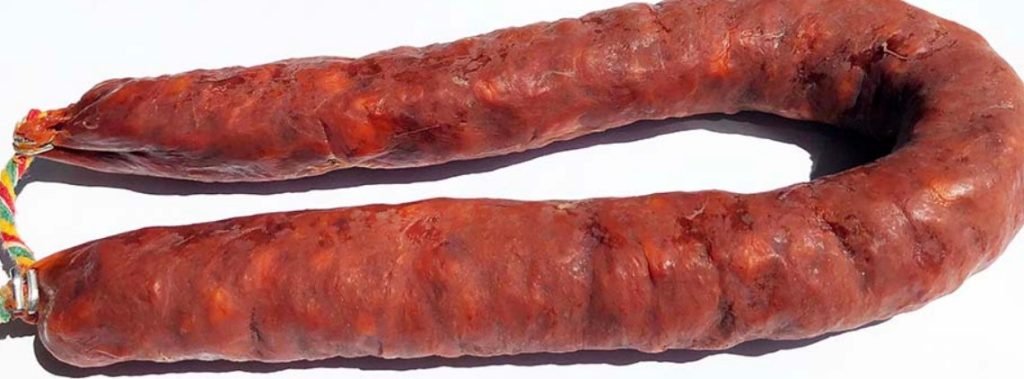
The Sausage Link Tying Process
If you want to start tying sausage links, you should place the sausage casing on a clean surface.
Use your thumb and forefinger to measure the first 5 inches of the spot.
If you do it gently, you can leave a noticeable dent. Take the casing on both sides of the link and twist it around at least 5 or 6 times.
To make sure the casing is in the same direction, be sure to rotate it in the same direction. You should repeat the process until you get to the end of the sausage.
Take a toothpick and pierce any air holes that are created by the twisting. You can place the sausage links in the fridge for 24 hours after tying them.
It would be better if you could hang them so they dry evenly. You can place them on a baking sheet on a refrigerator shelf if you don’t have enough room.
They need to be turned around a couple of times to ensure they dry evenly.
How to Cut Sausage Links?
It is much simpler to cut sausage links than it is to tie them. Place the sausages on a clean surface after they are removed from the fridge.
The links are supposed to be dry by now.
If you take the sausage out of the fridge too early, the meat inside will be too sticky, and you won’t be able to separate it from the casing, if you decide to remove it later on.
If you want to separate the individual links, use the tip of a knife. This should be done carefully so that you don’t accidentally cut the casing.
Make sure you do this before you cook the sausages. This way it will be a lot simpler. If you want to, you can remove the whole thing at this point.
It is possible that this will cause your sausage to lose its shape when you start cooking it. Sausages are delicious, so you might as well not eat them.
Some people like to remove the sausage after they cook them, but this could cause your sausage to fall apart as well.
You should wait for the sausage to dry out if you want to remove the casing after cooking the sausages.
It is possible to use cold water to wash it. Since the sausages are cold, the point is to do this while the sausages are still warm.
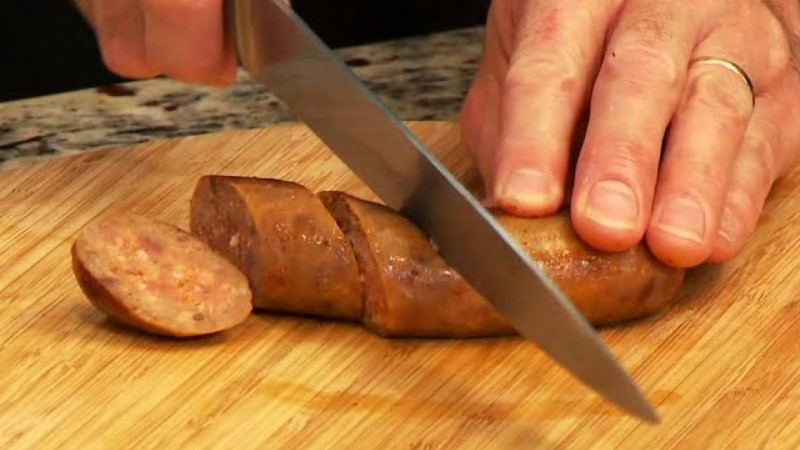
Tips for Tying and Cutting Sausage Links
Prepare Everything Before
In the process of making sausages, you should prepare everything in advance. Sausage casings are not exceptions.
It’s always a good idea to rinse all the casings with cold water. In addition, fill a bowl with cold water and soak the casings for about 10 minutes.
Use Butcher’s Twine
Butcher’s twine is a type of thin rope that can be used when making links. Make sure that the links are tightened by tying a knot around the pinched spots.
It is a good idea to puncture the air bubbles inside the case. Air bubbles may look harmless, but they can lead to mold or bacteria.
Leave Some Air Inside the Casings
Some air should also be left inside the shell. When you try to cook them, they might burst if you over fill them.
If you have leftover sausages, you don’t need to throw them out if you decide to remove the casings after cooking the sausages.
This applies to natural sausage casings, which are made from the skin or gut of an animal. Sausages covered in brine are some of the most popular types.
All you have to do is wash them, let them dry, and put them in the refrigerator. It is possible to keep them in the fridge for a full year.
Try Clockwise and Counterclockwise Methods
A method of tying sausage links is to twist the first link in one direction and the other in the opposite direction.
This method is also known as the clockwise and counterclockwise method. Some people recommend that you rotate the links in a single direction.
Freeze the Sausage Before Cutting the Links
It is a good idea to put your sausages in the freezer before cutting them. They should be left for 15 to 20 minutes to dry off.
If you notice that the filling is sticking to the casing, you should do this as well.
Conclusion
Those just starting out making sausages may have questions about how to tie and cut sausage links.
There are a lot of ways to mess with the process of creating and separating links. Practice and patience will go a long way in this world.
You will be tying and cutting sausage links twice as fast once you have it all figured out.

Foodie and a passionate cook, I am here to share all of what I know about cooking, kitchen, and food prepping.
Follow me for delicious and healthy recipes.

